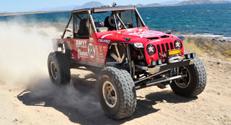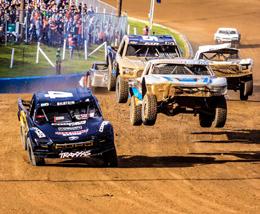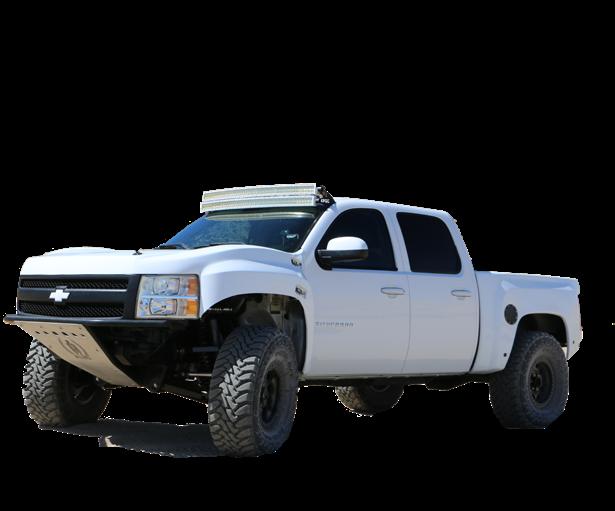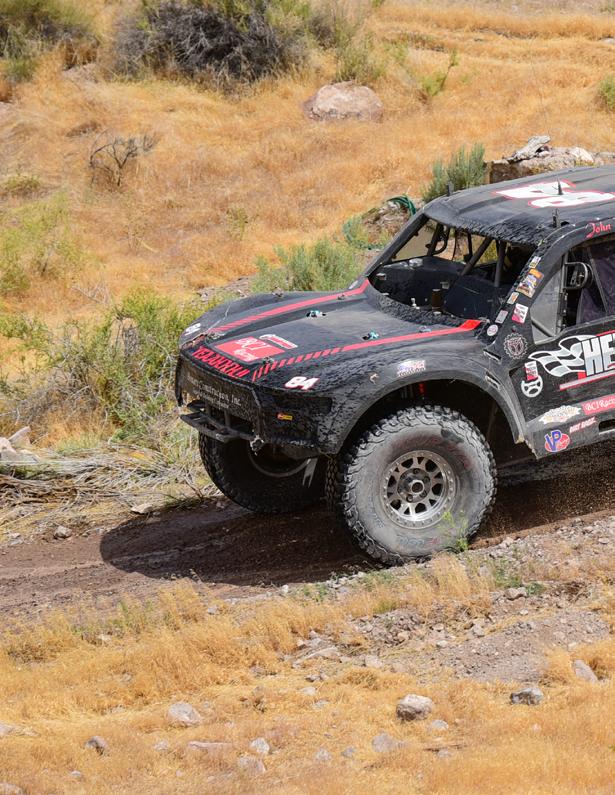
6 minute read
THE STORY BEHIND JOHNNY JOINTS
the story
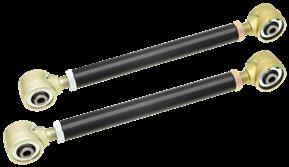
Advertisement
behind
johnny joints
Words: Jake Headlee Photos: Courtesy Rockjock 4x4
The TJ Wrangler was a game changer for the off-road world. The mainstream vehicle with a multi-link and coil suspension on live axles front and rear tore through the off-road world like a wildfire. The suspension system allowed users to have the strength and articulation of solid axles coupled with the smoother ride and road manners of coil springs. Though the flex and movement were still limiting. The OEM bushings would fight the movement, every step of the way. By swapping the control arms with unit that spherical rod ends, the flex would go up but ride quality would go down. There was no vibration dampening to the metal on metal designs of existing joints. Then John Currie decided to tackle the issue head on. Over the last 20+ years, the Johnny Joint has gone through an evolution. The first ideas of the new joint is a style that is often still used today. A urethane bushing with soft shoulders and a hard center. “We were playing with that style and we just weren’t achieving what we wanted to achieve.” John Currie, President of RockJock 4x4. “We weren’t getting the unrestricted movement. I remember one day on my way into work I thought, why don’t we make a joint that works like a Heim joint except the outside race is made of urethane?” The design shift made all the difference. The urethane would give the center ball the cushion it needs for road vibrations while allowing it to rotate and pivot much more freely. As time went on, the joints evolved from machined urethane in machine tubing with a fine thread stud welded to it to forged casings with grease fittings, a smooth heattreated center ball with custom molded urethane bushings. “We were consistently working to improve the joints.” Explained John. “As time went on, we would identify places to improve, like boring the inside of the joint for a better fit, moving away from most of the joints using a greaseable bolt and have the fitting directly on the outside shell. Also, the urethane we DIRTSPORTSWORLD.COM | 29
use is proprietary.” “One of the things that makes the Johnny Joint different than many of the joints out on the market is that the Johnny Joint is put together with a lot of preload.” John went on to say. “And that’s why we use kind of a softer durometer urethane. When you first put them together, they are super tights. Once the urethane takes a set like any other rubber does, the joint will loosen up and it never gets sloppy. It never gets to the point where it is flopping around in there.” The RockJock 4x4 Johnny Joints aren’t just a bunch of hype with cool marketing, either. One two of their company Jeep JKs, the joints have pre-run the length of the Baja 1000 multiple times, ran the Rubicon and Moab trails more times than can be remembered and have over 70,000 highway miles on theme with no failures. These things are built to last. The articulation of the Johnny Joint is industry leading. Not only can the smooth hardened ball rotate 360 degrees inside the forged steel body, they can articulate up to 42 degrees without tearing the bushing. Far more than the typical 30 degrees many of the competitor joints get. Maintenance is a breeze with quick and short shots of performance moly grease to the built-in fitting and should the need arise, they are fully rebuildable using tools designed and built by RockJock 4x4. The Johnny Joint has many sizes and has found its way to many applications. RockJock 4x4has built specialized joints specifically for many of them. “For each application, we’ve actually modified the Johnny Joint. Like on the Trac Bar that doesn’t need as much articulation but needs to be more ridged, we use a one-piece bushing and the body is a little bit narrower.” John added that they also have a 3-inch joint that is used for larger trucks, including the Mine-Resistant Ambush Protected (MRAP) military tactical vehicle. Some of the joints have even made their way into hot rod components. When asked about the limitations of the, John didn’t hesitate. “The main issue we see is if the bracket the Johnny Joint is going into 30| DIRTSPORTSWORLD.COM isn’t the right width. If the bracket sides are having to squeeze together to tighten, the ball ends may not get enough contact with the bracket and crack at the edges.” In these cases, the joint needs to be swapped for one the right dimension or a washer needs to be added to fill the space and provide a better contact surface. John also explained how they have found that the Johnny Joint isn’t meant for every situation. “In our 4500 car that we built for the EMC class at KOH, the joints work great. But when we tried them in our 4400 car [Ultra4’s Unlimited Class], they just wouldn’t last and we had to go back to Heim joints. Part of that is because of the size joint the chassis was built for. If there was more room to fit the large 3-inch joint, things may be different. We have also found that is a joint is too close to the exhaust, the bushing would just melt.” Top name suspension companies, other than RockJock 4x4, use Johnny Joints in their systems. They recognize the extreme durability and superior ride quality and instead of trying to reinvent the wheel, companies like Art Morrison Enterprises, Clayton Off Road, Core 4x4, Savvy Off Road and many more embrace it. For more information on Johnny Joints by RockJock 4x4 by John Currie, head to RockJock4x4.com.
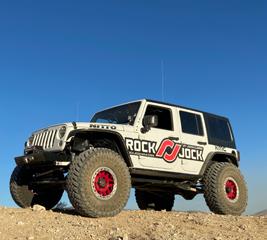
RockJock 4x4 control arms are tough as nails, with a large part of that being the reliable Johnny Joint on each end.


Johnny Joints are great at all ends of suspension control arms. The adjustable ends allow for the vehicle’s alignment to be fine-tuned.

Johnny Joints find their way on to many different vehicles, including desert race trucks used in NOORA and Baja 1000 races.
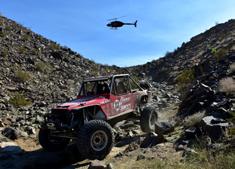
The internals of the Johnny Joint have been finely crafted from quality materials to produce a durable and lost lasting components.
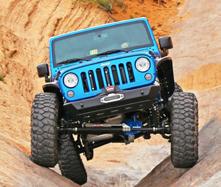
The duck walk articulation is where the Johnny Joint can shine. The control arms have more freedom to pivot on their side, helping the tires to have better contact with the terrain.
The Savvy 88 Car is most likely the most winningest EMC car in the history of KOH. Built by John Currie for Savvy Off-Road, it has gotten top three finishes piloted by John, John’s son, Jesse Combs and Dan Fresh. It is loaded with Johnny Joints and even uses them as engine mounts, transmission mounts and a Lowrance dash mount.
